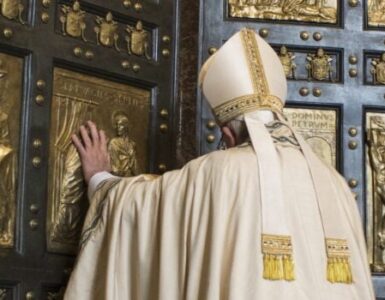It has been about a year and a half since Dr. Kevin Vost, author, speaker and bodybuilder, but most importantly loving husband, father and grandfather, unexpectedly passed away just around Easter. His impact on the world of Catholic thought will continually be felt for generations because of his resurrection of the art of memory.
His numerous and most popular works covered this lost art of memory. In them, he would not only lay out the method itself and argue for its value in one’s education, but he would then give examples of useful things for one to memorize. These would range from general trivia about the Catholic faith, arguments for belief in the Catholic faith, to the ways to better worship within that Catholic faith. His books, most importantly, would always end with the ways that the reader could apply this method to the ever-growing list of memorizable pieces of information. Through this practice, and making this a practice of one’s own, is what would help strengthen the soul and grow it in its capacity for understanding and love of God.
I was blessed, like many who reached out to him because of his extensive generosity of time and expertise, to speak with him a couple of months before he died about the role that memory has on the formation of culture. In this conversation he shared a story about the invention of writing in Egyptian mythology that fascinates me to this day.
It was Thoth, the god of wisdom, but also magic (which is what modern people should recognize as technology), was the one who taught writing to the Egyptian people. The purpose, as the story goes, was to foster greater wisdom to the people because they would have the wisdom recorded for future generations. However, Re, the sun god who ruled over the other gods, warned that this practice would actually hurt their capacity for wisdom because they would rely upon these documents and lose their ability to memorize the wisdom, thus more deeply internalizing it.
One of the things that fascinated me about reading Vost’s books and speaking with him was the connection between memory and the formation of tradition and culture. Vost sought to utilize this inherent connection in his own works on memory, many of which he dedicated to specific aspects of the Catholic Faith. The first book of his that I read was simply Memorize the Faith! and it covered a broad swath of elements from Catholicism like the twenty mysteries of the Rosary, the thirty-five (at the time) doctors of the Church, and even the seventy-three books of the Bible.
Dr. Vost saw this practice as a building up of the soul itself. This was not solely because of the content being memorized, though that was an important part, but that the very action of memorization builds up the soul. This actually follows with what the Church Fathers would recognize about one of the three essential powers of the rational soul itself. The Fathers used these three powers of the soul as an analogy for the Trinity, with memory being compared to the Person of the Father because it is the first principle of the soul that allows for the intellect and the will that flows from the intellect to operate. This shows that it is memory, from a collective standpoint, that allows for the community’s culture to flow.
Even the ancient pre-Christians recognized this. We find this phenomenon presented in dramatic form in Greek mythology. The foundations of Greek culture from a mythological standpoint were the Muses, those goddesses who represented the various aspects of culture like poetry, history, dance, song, tragedy, astronomy and comedy. While many might know who their divine father was in the mythology, Zeus, it is their mother who is more interesting. These muses, these inspirations of humanity, owe their existence to the Mnemosyne, the Titan of memory. It is the product of the “father-figure god,” the organization principle of the community, and memory that gives us culture. What this reality of Greek mythology shows us is that they always recognized something divine, or beyond the natural, about memory and that memory played an essential part in the formation of culture.
The formation of culture is what allows for the handing on of tradition (the Latin word tradere means “to hand down”). From the standpoint of the Catholic Church, this applies to the handing on of Sacred Tradition. Without memory, there is nothing to hand down. Because the very nature of the Sacred Scripture is written, the “wisdom” of the Church Fathers who were first taught how to understand it must be remembered in order to be passed down. If the Church today hopes to stand on the shoulders of giants, we must remember where those giants are standing.
One way that Dr. Vost’s memory is preserved in his work is how it continues to build up the Catholic Faith in my classroom. I have adopted his House of Memory method in nearly every unit that we cover in the classes I teach for my high school students. I use the models that Dr. Vost produced in his many works on memory and the Catholic faith, some examples being the “Five Ways of St. Thomas Aquinas,” “the fruits of the Holy Spirit,” and “20 Logical Fallacies.” I have also adapted these models for information unique to my classes like various lists of vocabulary words and the hierarchy of grace.
The most gratifying continuation of Dr. Vost’s work, however, is when my students must create their own models, their own “Houses of Memory” with the information they are expected to learn. This not only creates a unique way for students to experience and participate in the art or memory, but it also creates a solid bond between this art and the Faith itself. When the Catholic Faith becomes so much a part of their mind and soul, it will take a stronger hold on their heart.
The Eastern Church has a saying similar to “rest in peace” or the “Eternal Rest” prayer that is beautifully fitting for Dr. Kevin Vost. It simply commends him to God with the phrase: “Memory Eternal.”
Photo by Daniel Öberg on Unsplash













